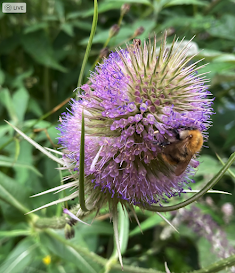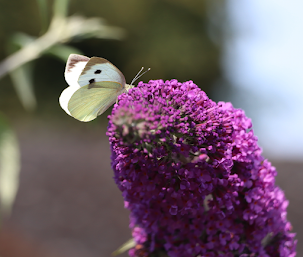During my lunchtime today i stood out looking at the new Bee Hotel that has been created and it was looking fantastic. How simple but effective it is, made out of a few stacked up pallets and then filled with natural materials, leaves, cones, bamboo, bricks with holes, plant stems and Wood blocks with holes drilled in them. Surrounded by Bee favoured plants makes it a great habitat. It was only created a week and it was starting to be used and continued to be.
Today with only a little sun out it was buzzing with invertebrates. The mining bees were in and out of the holes which was great and sharing with a Potter Wasp . They take a prey item in, lay their egg on it and then close up and do the same again so they fill the hole as you can see with some of the holes below. When the egg hatches it will then have food and pupate so they can all then exit at a similar time - very clever. You can see that there are some holes that have been sealed up already and a good sign for next year.
The Plants around were also in flower and attracting lots of of other insects too. There was a Common Carder Bee. Also Buff-tailed, Red-tailed and White tailed Bumble Bees gathering nectar and pollinating the flowers.
Common wasps and Median wasps were chewing the wood around the edges. They mushing it up into a pulp and then use it in building their paper nests.
There were lots of Butterflies too taking advantage of the nectar on the Buddleja around it including Red Admirals, Peacocks, Large White, Small White, Green-veined White, Brimstone, Meadow Browns and Gatekeepers.
All in all it is now a great invertebrate habitat that is really showing off!























